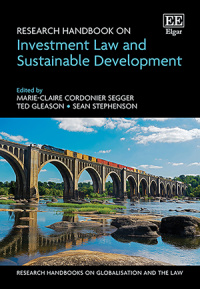
Volume 21/1
David Njagi Ngonge, Dr. Kariuki Muigua & Dr. Elvin Nyukuri
Ripples of Conflict: Drivers and Resolutions of Water Resource Disputes - A Case Study of Lake Turkana Basin of Kenya
Historically, the semi-arid and dry regions of the Kenyan borders have experienced perennial conflicts that revolve around the scarce water-related resources both on land and in water but spread around Lake Turkana, the largest desert lake in Africa. Lake Turkana, located in the Turkana Basin of Kenya, is a critical resource for the region. Covering an area of approximately 6,405 square kilometres, it is the largest permanent desert lake in the world. Besides, with its unique ecological and socio-economic implications, Lake Turkana has become a central point for studying the dynamics of conflicts resulting from water-related resource scarcity. The study sought to identify specific drivers of water use related resource conflicts in Lake Turkana basin of Kenya. Through a descriptive study design, the research applied a convenience sampling method targeting 90 respondents across all three sites, seeking about 30 participants per region. The study findings demonstrate that drivers of conflicts within the Lake Turkana Basin are not just locally domesticated, but also have external factors and influences including dynamics associated with inflammatory political speeches, economic, as well as environmental factors resulting in harsh climate. This is in addition to water management issues, high illiteracy and cultural pressures, ethnic tensions, historical grievances, scarce critical resources which are only concentrated in few locations, and geopolitical interests of neighbouring countries which contribute to conflicts in the region. The management of these conflicts therefore are best solved if these drivers of conflict are carefully understood as was the case for this study.
Maria Sanchez
Sustaining the Future Through Addressing the Past: the transitional justice functions of biocultural community protocols
Biocultural Community Protocols (BCPs) represent legal mechanisms for indigenous peoples and local communities (IPLCs) to assert collective regulatory rights to genetic resources associated with traditional knowledge. BCPs inherently speak to power asymmetries between state and subnational actors. Yet the literature on BCPs has insufficiently engaged with questions of whether, how, and the extent to which BCP author communities utilise these protocols to demand redress for past harms which have constituted those asymmetrical power conditions. Seeking to connect scholarship on BCPs with the transitional justice literature, I explore three hypotheses positing mechanisms by which IPLCs are leveraging BCPs to assert transitional justice demands. I then evaluate these hypotheses through analysis of the 34 BCPs registered with the United Nations ABS Clearing House.
Paul Kimani
Leveraging Carbon Trading for a Just Energy Transition in Kenya
This article explores how Kenya’s carbon trading framework can be leveraged to support a Just Energy Transition (JET) that aligns climate action with socio-economic equity. While Kenya is a leader in Africa’s voluntary carbon market, exemplified by its regulatory innovations and nature-based projects, serious concerns persist regarding community marginalisation and inadequate benefit-sharing. The article critically examines Kenya’s Climate Change Act 2016, the Carbon Markets Regulations 2024, and emerging frameworks for internationally transferred mitigation outcomes (ITMOs) under article 6 of the Paris Agreement. It identifies key challenges, including complex approval procedures, institutional overlap, weak enforcement mechanisms, and limited capacity for community participation. The analysis proposes a suite of legal and institutional reforms: recognising carbon credits as financial instruments, expanding project eligibility to include blue carbon and urban planning, clarifying institutional mandates, and strengthening community safeguards through mandatory Free, Prior, and Informed Consent (FPIC). It also advocates for streamlined regulatory processes and targeted capacity building. By embedding equity into the design and implementation of carbon markets, Kenya can transform carbon trading into a tool for inclusive development. The article contributes a critical legal perspective to the discourse on climate justice and offers policy recommendations for aligning carbon finance with constitutional values and sustainable development goals.
Viviana Morales Naranjo
Constitutionalism of Nature
Tensions Between Rights of Nature Defenders and Ecuadorian Constitutional Court
In 2008, Ecuador became the first country in the world to recognize the rights of nature (RoN) in the Constitution. Seventeen years later, it is necessary to analyze the work carried out by nature defenders and Ecuadorian Constitutional Court to develop jurisprudential lines about the foundations, content, and limits of RoN. This research has two objectives. On the one hand, we will identify the historical periods in which nature defenders filed the most lawsuits demanding protection and reparation of Nature at the Constitutional Court and the responses they have received. On the other hand, this research will explain the periods in which the Constitutional Court issued the most jurisprudential lines to explain the foundations, content, and limits of RoN and the degree of judicial independence that has existed in each composition of judges of the Constitutional Court from 2008 to 2025. This analysis will allow us to understand whether Ecuador has a Constitutionalism of Nature, that is, a Constitution and constitutional jurisprudential development that materializes Nature as a subject with rights and not a commodity.
Prerna Yadav, Sruthi Pillai & NC Narayanan
Institutional and Regulatory Constraints of Governing Water in India: An Illustration through Groundwater Regulation and Pollution Abatement
Water governance involves multiple challenges that are difficult to address with a single solution. This complexity in governing water resources in India, which makes it a wicked problem illustrated through two cases – first, groundwater exploitation situated within the existing legal framework that enables unregulated resource appropriation. The inconsistencies in the role of the state with assistance for groundwater irrigation through different subsidies such as farm electricity supply, and the incentive structure for cultivation of water-intensive crops such as the paddy-wheat cropping systems reflects the paradox of groundwater exploitation problem. Second cases elaborates on water pollution, especially by municipal sewage and the limited enforcement of environmental regulations, inadequate monitoring, and weak penalties for noncompliance. These cases call for a nuanced understanding of complexity in water resource problems for formulation and implementation of more sustainable pathways. This understanding is drawn from the analytical framework constitutive of path-dependency and wicked problem concepts. The paper traces the path-dependence in emergence of these wicked problems – groundwater exploitation and water pollution. It elaborates on how the efforts to modernise water governance and for irrigation expansion within the contextual factors and institutional legacies have led to unintended consequences. This understanding is crucial for undertaking legal and institutional reforms that could introduce flexibility, continuous evaluation, and robust accountability mechanisms.
Agustin Grijalva
Rights of Nature and the right to a healthy environment: Jurisprudence of the Ecuadorian Constitutional Court
In this essay I analyze some relationships among the rights of nature and the human right to a healthy environment. I show these relationships describing several rulings of the Ecuadorian Constitutional Court, and specially the Los Cedros judgement, which is a ruling on mining concessions granted within a cloud forest located in a highly biodiverse area. Judges must impartially examine the arguments and evidence presented by the parties involved. However, to issue a ruling, they must ultimately adopt a position based on their own interpretation of the law and understanding of the facts. The author of this essay served as the rapporteur judge for the Los Cedros ruling when I was a member of Ecuador’s Constitutional Court. During this judicial process and afterward, I have reflected on the relationship between the rights of nature and the right to a healthy environment. While drafting the ruling and later, after leaving the Court, analyzing it as an academic—considering its precedents, context, and consequences—I have developed several scholarly arguments that are expressed in this essay.
Rika Fajrini
Lessons from a Decade of Indonesia Environmental Litigation: Accommodating Public Interests in Civil Liability Cases
This paper analyses 321 civil environmental cases in Indonesia from 2009 to 2022, identifying patterns and trends over the past decade. The findings reveal a growing public interest dimension in these civil cases, marked by the rise of public interest litigation, the expansion of legally recognised harms as liability base and the shift toward restorative remedies. Despite the presence of a specialised environmental law, the cases are still trialled within a mix of private law framework, which has its limitation in accommodating public interest. The cases show the needs for a harmonious coexistence between public and private law in environmental liability.
Comments
Transition and Trends: Achieving Climate Justice and Human Security in Africa
by Janice Golding, Patricia Kameri-Mbote & Macharia Kaguru
The transition from conceptualising to implementing climate justice and achieving human security is just beginning in Africa. In this paper, we adopt an inter-disciplinary approach to examine enabling factors that drive climate justice and human security in Africa. We attempt to contextualise this examination amidst growing global solidarity on climate justice, and in so doing, examine Pan-African issues and investigate emerging policy trends. The first section highlights the climate change context in Africa, emphasising the disproportionate global impacts in Africa. The second part interrogates the definitions of climate justice in Africa, noting the dissonance in meaning and relevance, and also analyses trends associated to cases that have come through the law courts. The third and final section discusses the potential role of non-state actors in the African climate justice discourse, arguing that African youth and community enablers are the bedrock for achieving climate justice and human security.
Book Reviews
Advanced Introduction to International Water Law
by Owen McIntyre (Edward Elgard Advanced Introductions Series, 2023)
Reviewed by Sujith Koonan
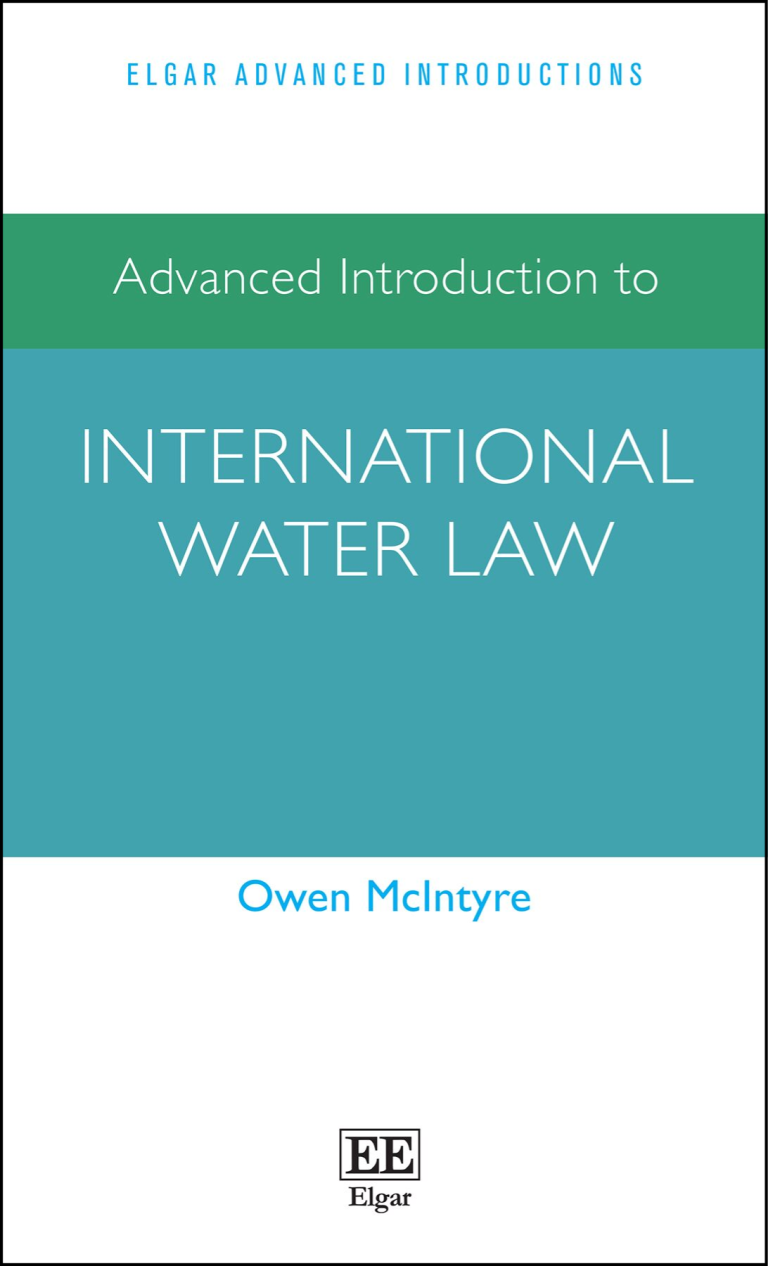
Feminist Frontiers in Climate Justice – Gender Equality, Climate Change and Rights
by Cathi Albertyn, Meghan Campbell, Helena Alviar García, Sandra Fredman and Marta Rodriguez de Assis Machado (eds)
Reviewed by Irina Lawrenz
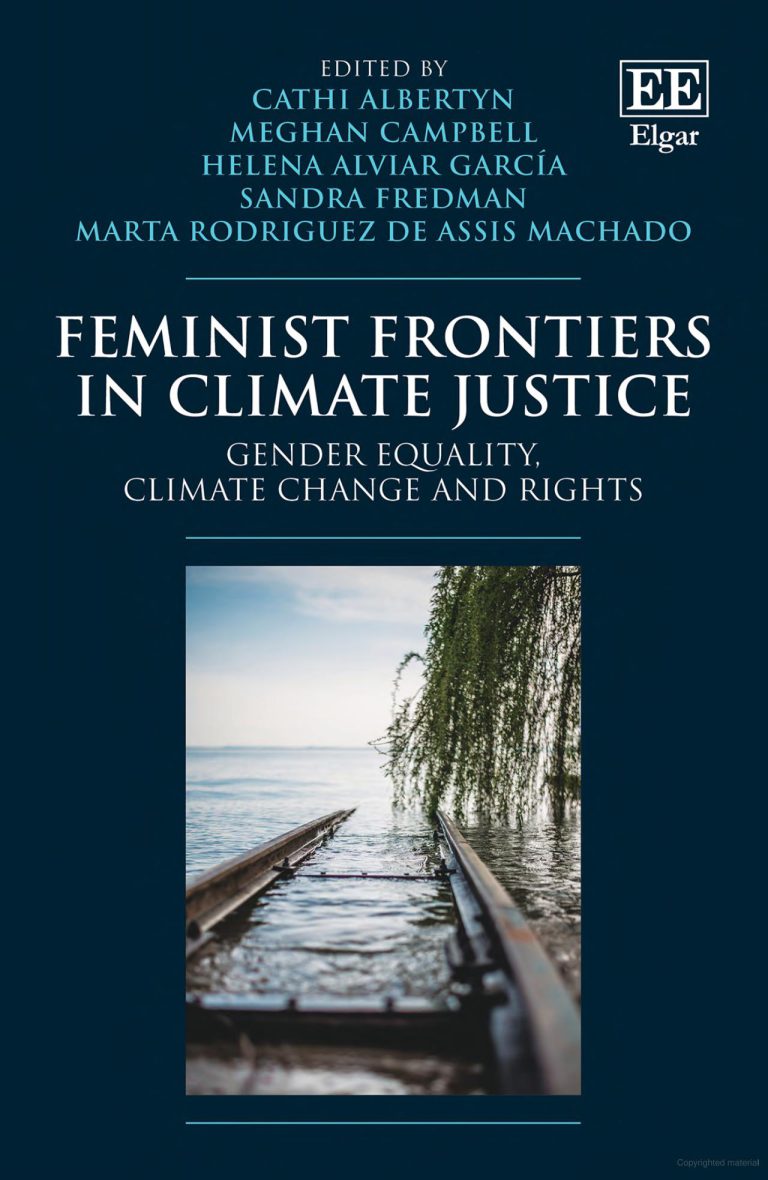
Research Handbook on
Polar Law
by Karen N. Scott and David L. VanderZwaag (eds)
and
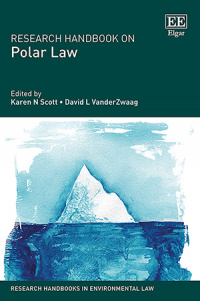
Climate Change and the Polar Aesthetics
by Lisa E. Bloom
Reviewed by Feja Lesniewska
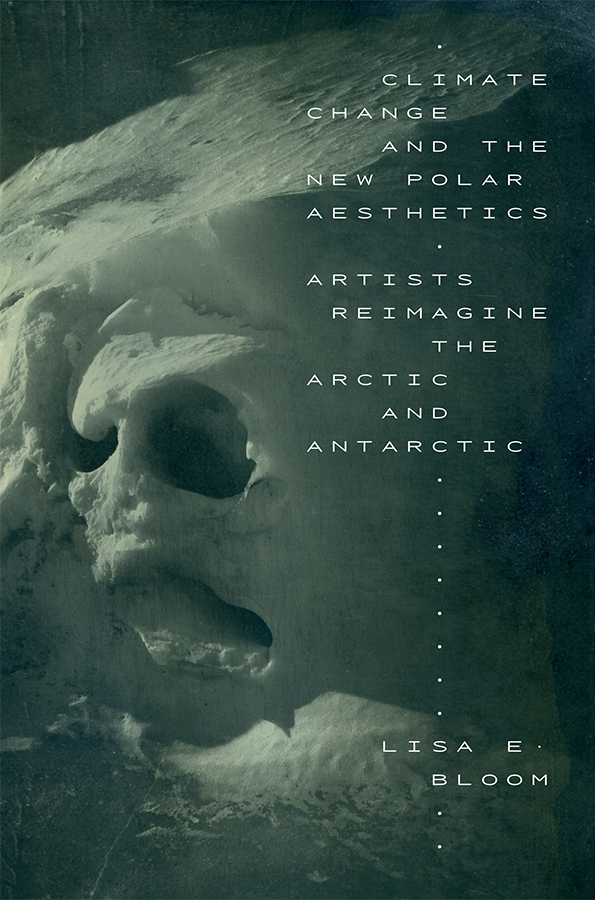

Volume 21/2
Amanda Byer
Emparking Empire: Exclusionary Nature and Spatial Injustice in Commonwealth Caribbean Environmental Law
Recent scholarship on the environment has involved an examination of the role of Empire in shaping our relations with the natural world. Parks and protected areas were some of the earliest conservation mechanisms deployed by colonial authorities to protect wilderness and they continue to fulfil this objective in modern environmental law. This paper complicates our understanding of parks as tools of spatial injustice and emblematic of exclusionary conservation in the law. It traces the origins and development of parks in the Commonwealth Caribbean (former British colonies in the Caribbean) using a legal geographical lens to assess their impacts on local communities and place attachment in the region. By paying attention to the way in which imperial imaginaries of wilderness were consolidated in the law at the expense of local communities, this paper highlights the need to democratise and diversify approaches to nature in the law. This is of particular importance to small island developing states, such as those in the Caribbean region, who rely on pristine nature as a core tourism asset but also face unique vulnerabilities in an age of environmental polycrisis.
Esha Joshi, Ishika Patodi and Neema Pathak Broome
The Revamping of India’s ‘Access and Benefit Sharing’ Regime: A Gateway to Inclusive Biodiversity Governance?
Codified for the first time in the Convention on Biological Diversity 1992 (CBD), ‘Access and Benefit Sharing’ (ABS) is a mechanism for ensuring that indigenous people and local communities (IPs & LCs) receive a share of the monetary benefits arising from the access and use of their traditional knowledge and associated genetic resources by third parties. Since the adoption of the CBD, the implementation of access and benefit sharing, bolstered by additional international commitments such as the Nagoya Protocol, has gained traction. India, as a party to both instruments, had enacted the Biological Diversity Act in 2002 (BDA) and framed allied rules and regulations. In the original provisions, this ABS framework were not stringent enough to fully safeguard the rights and decision-making powers of IPs & LCs. Successive changes to these instruments, have now further whittled down the rights of IPs & LCs in the ABS process. This comes at a time when India has made ambitious commitments under the Kunming Montreal Global Biodiversity Framework (KMGBF) on conserving biodiversity in tandem with IPs & LCs’ rights. This paper aims to analyse the aforesaid changes and their impacts on the ABS mechanism in India including, the extent to which they complement or contradict India’s commitments under the Kunming Montreal Global Biodiversity Framework and Article 8(j) of Convention on Biological Diversity 1992. The authors hope this will add to the body of knowledge in India pertaining to access and benefit sharing and also lead to a better-informed response to the Government’s recent efforts of revising the Indian ABS framework to bring them in compliance international mandates.
Diana Rahmawati, Arief Budiman, Ifrani, Muhammad Topan & Muhammad Hendri Yanova
Legal Protection of Indigenous Peoples Rights in Forest Management in South Kalimantan
Indigenous People have a very strong and historical relationship with their land and nature. They continue to struggle to strengthen their position and to obtain their rights. Often the rights of customary communities are ignored by the state, coupled with the existence of Law No. 41 of 1999 concerning Forestry, which states that customary forests are state forests located in the territory of customary law communities. Whereas the 1945 Constitution in Article 18B states that the State recognises and respects customary law communities and their traditional rights. The purpose of the study is to identify and analyse the legal certainty of the position and rights of Indigenous Peoples in South Kalimantan Province and the policies implemented by the government in forest management by Indigenous Peoples in South Kalimantan Province. The results of this study are as follows. First, South Kalimantan Province has not provided optimal legal certainty for Indigenous Peoples and their rights. Out of thirteen districts/municipalities, only three districts have ratified regional regulations in the framework of protection, recognition and empowerment of indigenous peoples. This situation arises because the existence of Indigenous Peoples is determined by the regional government and the political process in the regional parliament., Second, there are no customary forests that have been ratified by the Minister of Environment and Forestry. This absence limits legal access to Indigenous Peoples to participate in forest management. To empower indigenous peoples, the government grants permit to manage forest areas in the Social Forestry scheme such as Village Forests, Community Forests, People’s Plantation Forests, Forestry Partnerships. These schemes involve Indigenous Peoples in Forest Farmer Groups. However, the social forestry scheme is not in line with Constitutional Court Decision No. 35/2012 because the concept of social forestry has the status of a state forest that involves the community in its management.
Comments
A Review of End-of-Life Vehicle Legal Framework in China
by Jie Yang
Despite being the largest vehicle owner in the world, China faces significant challenges with its end-of-life vehicle (ELV) management. In its early stages, Chinese ELV legislation focused primarily on simple metal recycling, with limited consideration for environmental and industrial synergies. Apart from improving the environment, ELV formal management can also bring many benefits to the vehicle industry. However, these benefits are accompanied by challenges. This research provides a comprehensive review of the Chinese ELV legal Framework to clarify the direction and focus of ELV lawmaking. Specifically, this research reviews and analyses Chinese ELV management over an extended 20-year period, from law and policy making by the central government. The core sections identify three problems related to the whole ELV legal framework based on the life cycle thinking approach.
Bhanupali-Bilaspur-Beri Railway project, Himachal Pradesh: Assault on the Mountains
by Garima Thakur
The Bhanupali-Bilaspur-Beri Railway Project is a major infrastructure project being undertaken in the mountainous state of Himachal Pradesh that is characterised by its limited railway connectivity. Keeping aside its nature as a public transit project that should ideally be welcomed in contradistinction to expansion of national highway networks in the state, the project and the model of extractive development it signifies, must be questioned in the context of regional ecological sensitivity and political economy. A scrutiny of the manner of application of environmental protection legal frameworks in approving the BBB project reveals that the law does not account for Himachal’s geological and ecological sensitivity to avert proliferation of commercial infrastructure that exacerbate the impact of EWEs in the form of cloudbursts. Moreover, a non-legal, yet crucial enquiry must remain in whether construction of railways and expansion of national highways to initiate large-scale commercial ventures in the state, imitating a Western and plains-based development model, can define ‘development’ in Himachal Pradesh. A need for an alternative model of development is explored that is culturally-rooted, ecologically compatible, and defies the logic of linearity in the conception of development.
LE REGIME JURIDIQUE DE LA POLLUTION SONORE AU CAMEROUN
Aloys YANOU
One essential component of the natural environment is noise. Increasing noise pollution is caused in part by economic activity and population concentration. This legislative comment looks at the legal framework pertaining to noise pollution in Cameroon. The legal framework pertaining to the fight against noise pollution is made up of a variety of instruments, including the Constitution, several laws and decrees, as well as a Cameroonian standard that establishes noise thresholds. Therefore, even though there is a legal and regulatory framework for noise management in Cameroon, it is still in its infancy and is not being applied effectively.
Book Reviews
Research Handbook on Investment Law and Sustainable Development
by Marie-Claire Cordonier Segger, Ted Gleason, Sean Stephenson (eds)
Reviewed by Francesco Blasi
